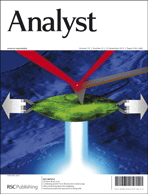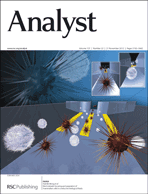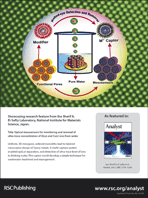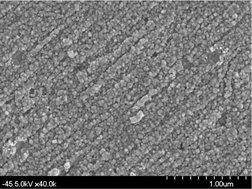We have a bumper crop of nine HOT articles in this new issue 22 of Analyst!
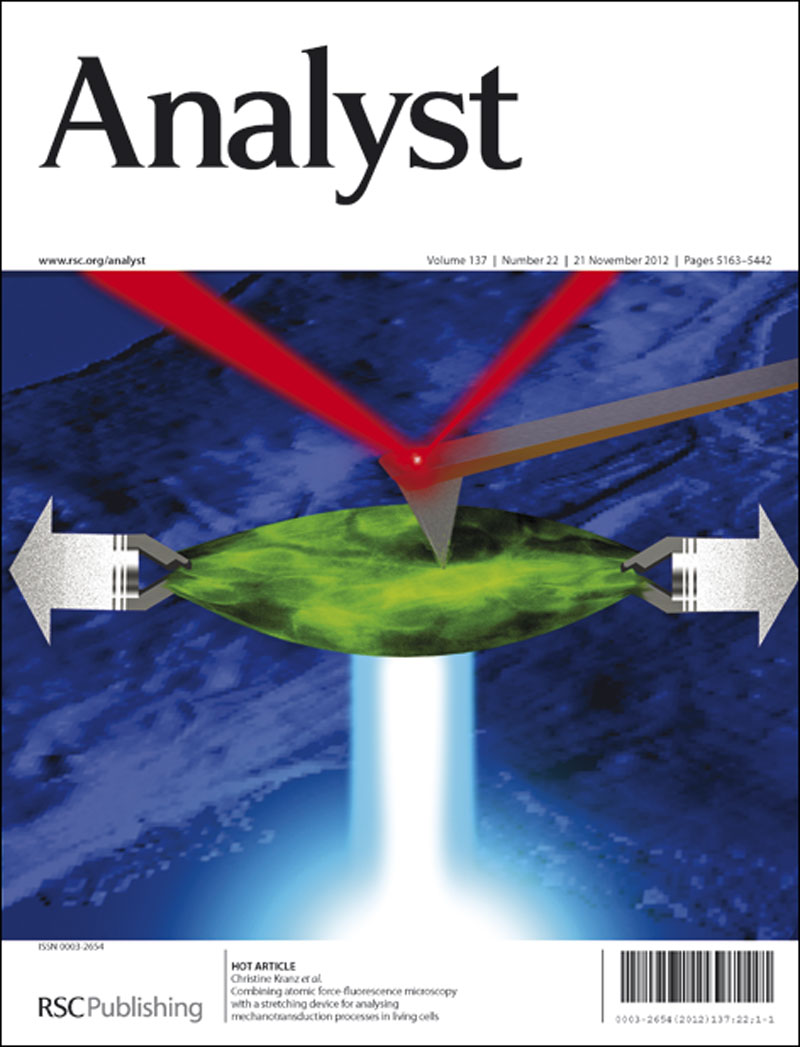
Kranz et al., Analyst, 2012, 137, 5208
From the outside front cover we have Boris Mizaikoff, Christine Kranz and colleagues paper on a miniaturized cell stretching device for mechanically stimulating living cells at physiologically relevant levels applicable to a wide variety of adherent cell types.
Combining atomic force-fluorescence microscopy with a stretching device for analyzing mechanotransduction processes in living cells
E. Hecht, P. Knittel, E. Felder, P. Dietl, B. Mizaikoff and C. Kranz
Analyst, 2012, 137, 5208-5214
DOI: 10.1039/C2AN36001B
We also have a number of exciting papers on a range of topics including;
Peroxidase mimicking DNA–gold nanoparticles for fluorescence detection of the lead ions in blood
Chi-Lin Li, Chih-Ching Huang, Wei-Hsi Chen, Cheng-Kang Chiang and Huan-Tsung Chang
Analyst, 2012, 137, 5222-5228
DOI: 10.1039/C2AN35599J
Selective fluorometric detection of pyrophosphate by 3-hydroxyflavone-diphenyltin(IV) complex in aqueous micellar medium
Raul Villamil-Ramos, Víctor Barba and Anatoly K. Yatsimirsky
Analyst, 2012, 137, 5229-5236
DOI: 10.1039/C2AN35999E
Layer-by-layer self-assembled graphene oxide/silica microsphere composites as stationary phase for high performance liquid chromatography
Xiaojing Liang, Shujuan Liu, Xinwang Song, Yangwen Zhu and Shengxiang Jiang
Analyst, 2012, 137, 5237-5244
DOI: 10.1039/C2AN36091H
One-step immobilization of Ru(bpy)32+ in a silica matrix for the construction of a solid-state electrochemiluminescent sensor with high performance
Jing Li, Fang-Nan Xiao and Xing-Hua Xia
Analyst, 2012, 137, 5245-5250
DOI: 10.1039/C2AN35980D
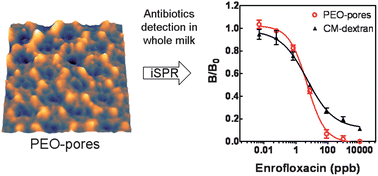
Rossi et al., Analyst, 2012, 137, 5251
Nanopatterned submicron pores as a shield for nonspecific binding in surface plasmon resonance-based sensing
Sabina Rebe Raz, Gerardo R. Marchesini, Maria G. E. G. Bremer, Pascal Colpo, Cesar Pascual Garcia, Guido Guidetti, Willem Norde and Francois Rossi
Analyst, 2012, 137, 5251-5259
DOI: 10.1039/C2AN35521C
Tactile multisensing on flexible aluminum nitride
Simona Petroni, Francesco Guido, Bruno Torre, Andrea Falqui, Maria Teresa Todaro, Roberto Cingolani and Massimo De Vittorio
Analyst, 2012, 137, 5260-5264
DOI: 10.1039/C2AN36015B
Protection and functionalisation of silver as an optical sensing platform for highly sensitive SPR based analysis
Gowri Manickam, Ram Gandhiraman, Rajani K. Vijayaraghavan, Laura Kerr, Colin Doyle, David E. Williams and Stephen Daniels
Analyst, 2012, 137, 5265-5271
DOI: 10.1039/C2AN35826C
Platinum nanoparticles intermediate layer in solid-state selective electrodes
Beata Paczosa-Bator, Leszek Cabaj, Robert Piech and Krzysztof Skupień
Analyst, 2012, 137, 5272-5277
DOI: 10.1039/C2AN35933B
These papers will be free to read until Oct 31st.














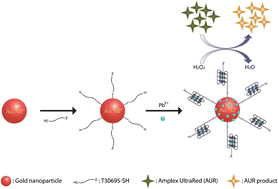


 Take a look below at some wonderful HOT articles we’ve recently published this month in Analyst. There are papers covering a large variety of fields, including SPR-based analysis, platinum nanoparticles, and cancer cell research. These HOT papers will be free to read for two weeks.
Take a look below at some wonderful HOT articles we’ve recently published this month in Analyst. There are papers covering a large variety of fields, including SPR-based analysis, platinum nanoparticles, and cancer cell research. These HOT papers will be free to read for two weeks.
